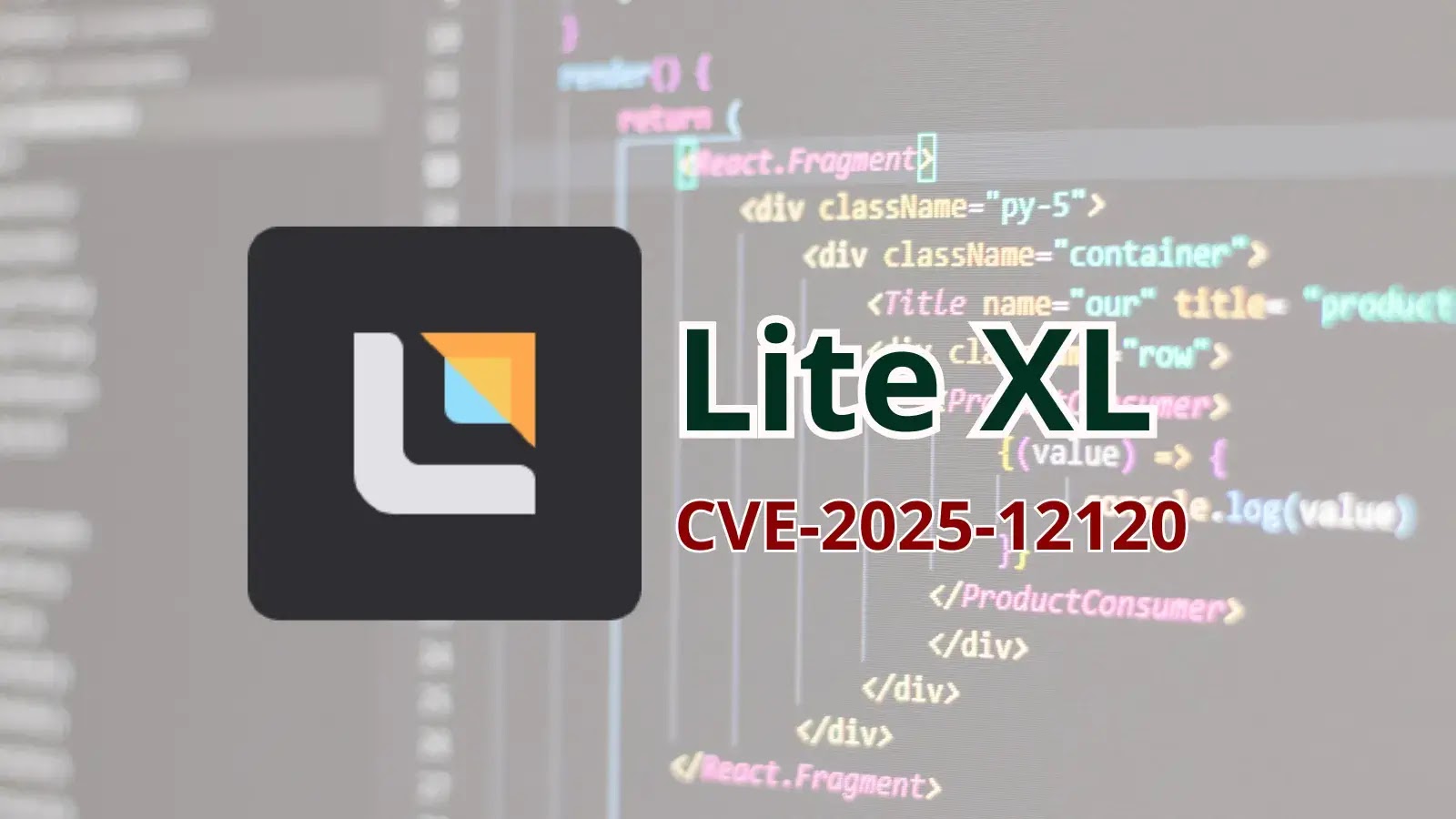
Lite XL Text editor Vulnerability Let Attackers Execute Arbitrary Code
A critical security vulnerability has been identified in Lite XL, a popular lightweight text editor, presenting a significant risk to its users. This flaw could enable attackers to execute arbitrary code on systems running affected versions, underscoring the constant need for vigilance in software security. For developers and IT professionals relying on Lite XL, understanding this vulnerability and implementing timely remediation is paramount.
Understanding the Lite XL Arbitrary Code Execution Vulnerability
Experts at Carnegie Mellon University have uncovered and meticulously documented CVE-2025-12120, a severe vulnerability impacting Lite XL editor versions 2.1.8 and earlier. This security lapse is not a mere inconvenience; it represents a direct pathway for malicious actors to compromise systems. The core of this issue lies within Lite XL’s handling of project configuration files.
How the Lite XL Vulnerability Operates
The arbitrary code execution vulnerability in Lite XL stems from how the editor processes project configuration files. When a user opens a specially crafted or compromised project configuration file, the inherent flaw allows an attacker to inject and execute their own code. This could lead to a range of severe consequences, including:
- System Compromise: Attackers can gain unauthorized control over the affected system.
- Data Theft: Sensitive information stored on the machine could be exfiltrated.
- Malware Installation: Further malicious software, such as ransomware or spyware, could be deployed.
- Persistence: Attackers might establish backdoors for continued access.
The insidious nature of this vulnerability is that it leverages a seemingly innocuous action—opening a project file—to initiate a broad compromise. It highlights the importance of scrutinizing inputs and the code that processes them, even in seemingly benign application functionalities.
Affected Versions and Impact
The CVE-2025-12120 vulnerability specifically targets Lite XL versions 2.1.8 and preceding releases. Users operating these versions are at risk. The impact of successful exploitation is high, as arbitrary code execution fundamentally bypasses security controls, allowing an attacker to operate with the privileges of the compromised user.
Remediation Actions for Lite XL Users
Addressing CVE-2025-12120 requires immediate action to safeguard your systems. The primary and most effective remediation steps are as follows:
- Immediate Upgrade: Update your Lite XL installation to the latest available version that patches this vulnerability. Always prioritize official releases directly from the Lite XL project.
- Exercise Caution with Project Files: Avoid opening Lite XL project configuration files from unknown or untrusted sources. Be especially wary of files received via email, unsecured downloads, or untrustworthy repositories.
- Principle of Least Privilege: Ensure that Lite XL, and indeed all your applications, operate with the minimum necessary user privileges. This can limit the damage if an arbitrary code execution exploit is successful.
- Regular Backups: Maintain regular, secure backups of your critical data. This is a fundamental defense strategy against all forms of cyber-attacks, including those involving arbitrary code execution.
Security Tools for Detection and Mitigation
While direct patching is the most effective solution for CVE-2025-12120, a robust security posture also involves employing various tools for detection and mitigation. These tools can help identify compromised files, monitor system behavior, and enhance overall endpoint security.
| Tool Name | Purpose | Link |
|---|---|---|
| Endpoint Detection & Response (EDR) Software | Monitors endpoints for suspicious activity, detects threats, and provides response capabilities. | (Refer to specific vendor solutions) |
| Static Application Security Testing (SAST) Tools | Analyzes source code for vulnerabilities before deployment (beneficial for developers using Lite XL for their code). | (Refer to specific vendor solutions) |
| Dynamic Application Security Testing (DAST) Tools | Tests applications in their running state to find vulnerabilities (useful for applications built using Lite XL). | (Refer to specific vendor solutions) |
| Antivirus/Anti-Malware Software | Detects and removes known malicious software from systems. | (Refer to specific vendor solutions) |
| Network Intrusion Detection Systems (NIDS) | Monitors network traffic for suspicious patterns and potential attacks. | (Refer to specific vendor solutions) |





